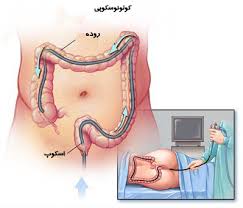
Inspection and examination of the colon and taking diagnostic and therapeutic actions are called colonoscopy. Colonoscopy is a procedure to examine the inner lining of the colon. Colonoscope is a device that uses a flexible tube with a length of about 1.5 meters and its diameter is as large as a finger. The tube has a very small light source and a video camera that is used for imaging of colorectal.
When performing colonoscopy, the doctor puts the colonoscope into the rectum and colon through the anus and observes large intestine on the monitor.
When it is necessary to perform Colonoscopy?
Unexplained bleeding from the anus, fecal occult blood, lower abdominal pain, chronic diarrhea or constipation, feeling of incomplete expulsion, necessity of inflammatory bowel disease, observing early polyps and colonic lesions and recognizing whether they are Benign or malignant, history of gastrointestinal malignancy in first-degree relatives and in some cases for people over 50 years. For doing this, firstly the patient uses laxatives or enemas to empty his bowels. Then, the tube-like colonoscope that has a camera enters the rectum and colon in order to examine the lining of the colon and rectum to check whether there is any ulcers or malignancy. Most of the colonoscope devices allows the doctor to perform simultaneous sampling of intestinal mucosa and suspicious lesions.
How is colonoscopy done?
During the colonoscopy, the patient lies down on the bed on his left side. Often, the patient is given a mild sedative drug to be relaxed and not feel pain during the test. In some cases, it is important to have strong painkiller. The camera on the tube sends the images of colon to the monitor and the doctor investigates it carefully.
 English
English فارسی
فارسی